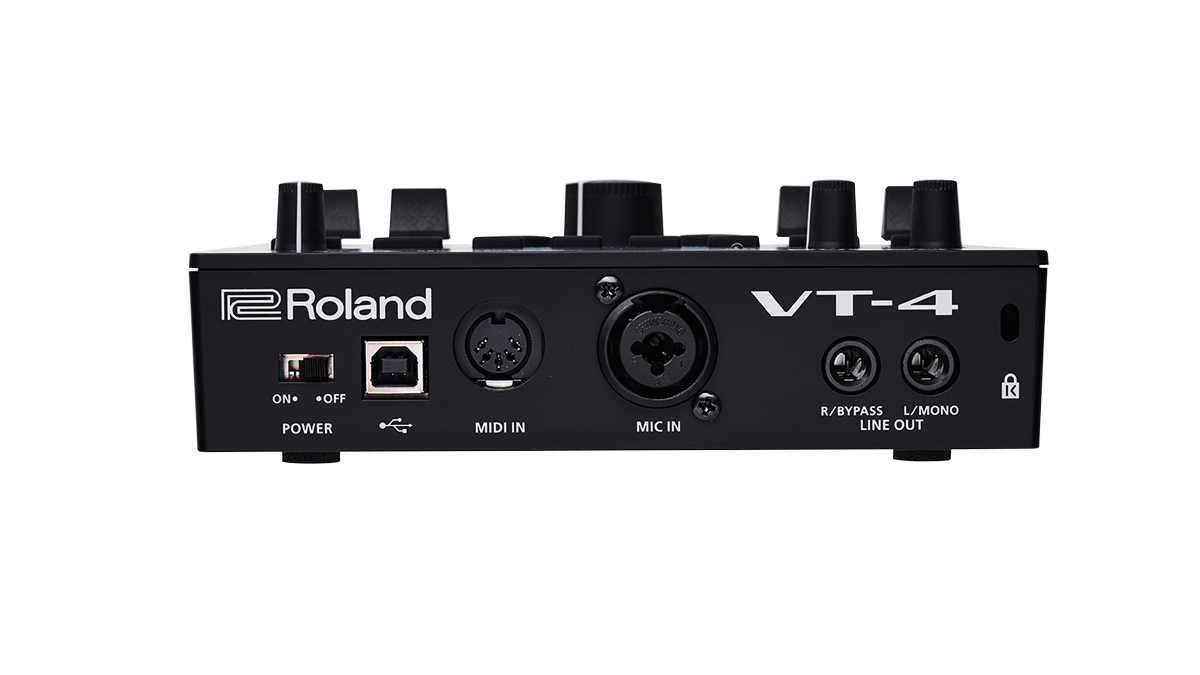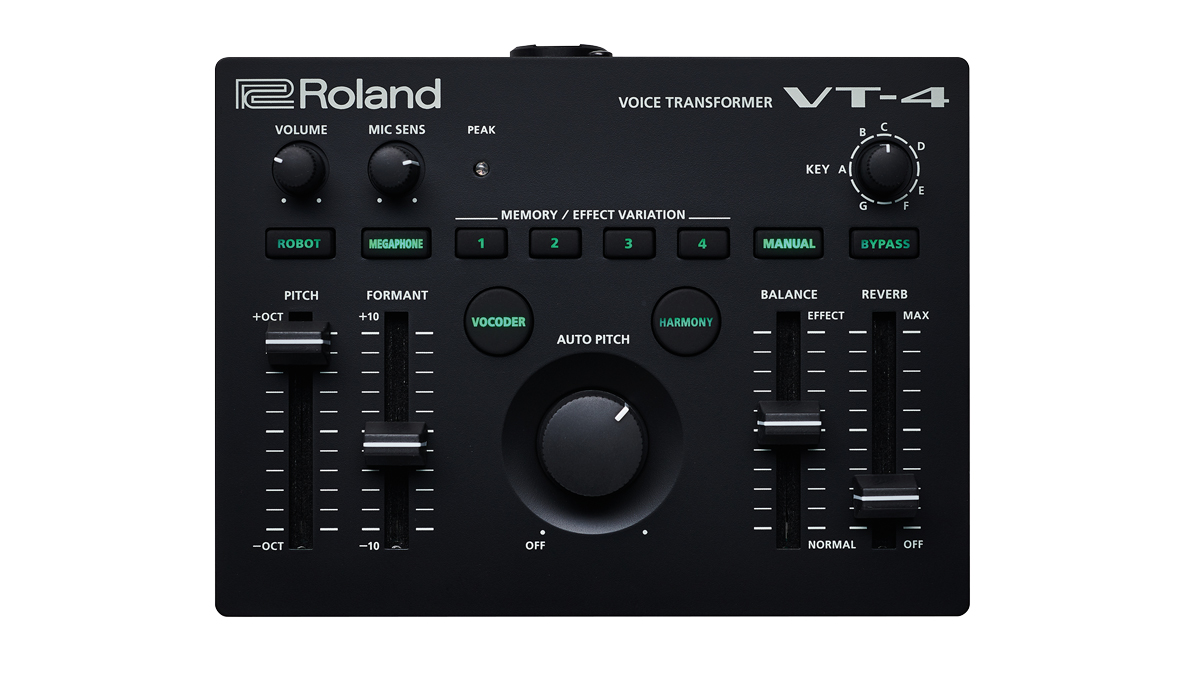MusicRadar Verdict
One of my new favourite compact vocoder boxes. Good price, sounds great and has a USB/Audio MIDI interface too.
Pros
- +
Very easy to use, with plenty of useful, musical-sounding modes and solid functionality.
Cons
- -
No class-compliant USB driver.
MusicRadar's got your back
Back in 2014 we reviewed the VT-3, which had some cool vocal tricks up its sleeve - sadly its poor autopitch tracking and lack of a proper MIDI input let it down.
Fast-forward five years and Roland has launched its successor, the VT-4. Contained within a similarsized but classier-looking box (and with USB or battery power), the VT-4 retains the same four front-panel sliders: Pitch, Formant, Balance (dry/wet vocoder mix) and Effect mix. However, the central mode dial has made way for an Autopitch dial which provides soft or hard quantisation of your vocals, according to a user-specified key (set by the front panel key dial). This new Autopitch mode tracks much more reliably than the VT-3, so we’re off to a very promising start!

The VT-4’s modes include Robot, which is a monotone robotic tone (with four variations), Megaphone, which gives a megaphone-like quality to your voice (with four variations) and the main Vocoder mode which can operate as a monophonic vocoder, triggered either by your voice only (Autopitch) or via polyphonic MIDI input from your DAW or a keyboard. Note: you can also use an external sound source as a carrier signal instead of the internal synth.
MIDI adventures
This new direct MIDI input is a big deal and makes the VT-4 way more versatile than the VT-3. You can now use any external MIDI DIN or USB MIDI source to control the pitch of the Vocoder mode or the Robot mode (Robot is automatically selected when connecting a DIN MIDI signal) and the results/tracking are excellent. Particularly when using a humble SM57 and a MIDI keyboard to control the Robot mode, we obtained some nicely natural monophonic vocoded sounds (sounding much like my natural voice, yet pulled into pitch smoothly) but with no obvious artefacts or gating noises (beating its closest competitor, the Electro Harmonix V256, in this respect). Diction and detail is also super clear and intelligibility is excellent too, plus the enhancer feature allows for even clearer tones if required.
The new direct MIDI input makes the VT-4 way more versatile than the VT-3
The Harmony mode allows up to 4-note chords to be triggered from your MIDI keyboard or DAW, adding natural-sounding harmonies as you sing in real time. Alternatively, when no MIDI-input source is applied (when using Vocoder/Robot mode), Autopitch is automatically engaged and pressing the harmony button smoothly applies either two or four notes of harmony to your voice, according to the user-chosen key/variation. 4-note polyphony can be limiting at times (especially for people like me who like to play thicker chord voicings when vocoding) but for most instances it works great.
Finally, like the VT-3, the VT-4 also operates as a 2-in/2-out USB audio/MIDI interface and once again, the onboard delay and reverb effects sound very musical and slot nicely into any style; you can also save your favourite effect/vocoder settings to the onboard scene memories for instant recall. This is a much-improved product in price, user-friendliness, sounds - oh, and it’s portable too!
Want all the hottest music and gear news, reviews, deals, features and more, direct to your inbox? Sign up here.
